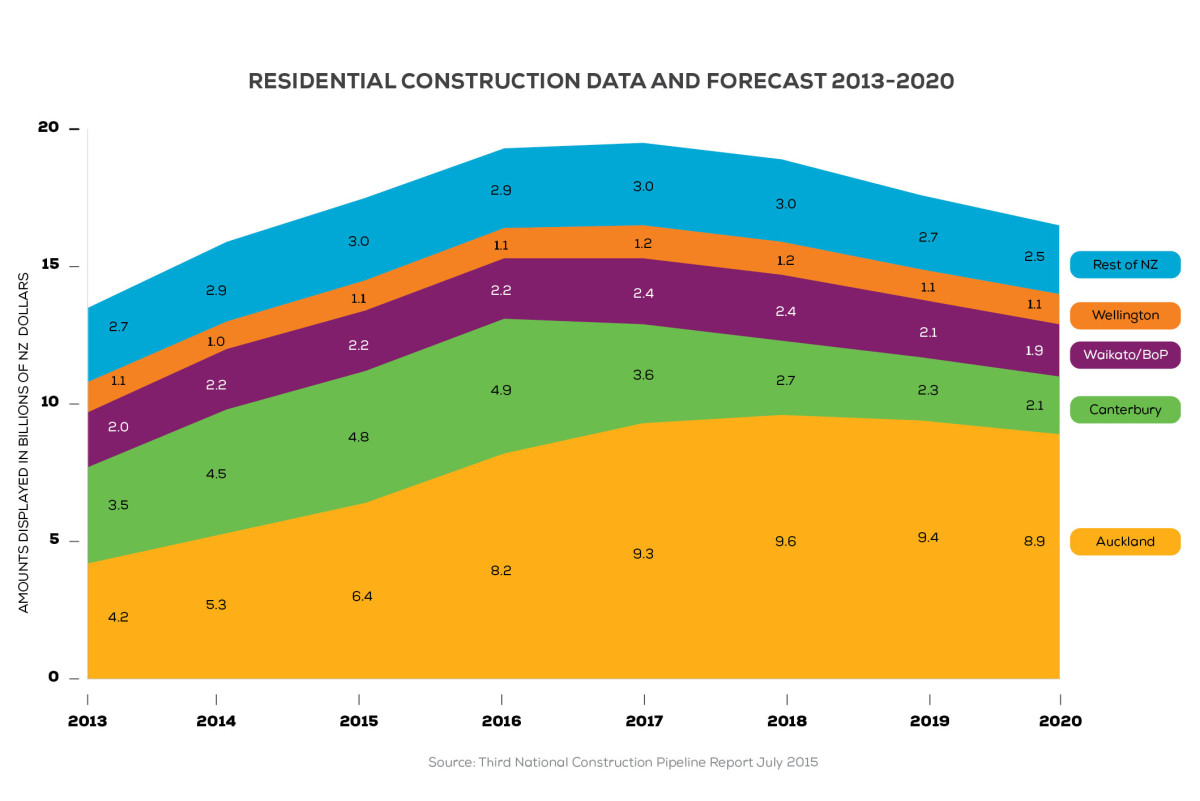Sustaining the workforce
17 Nov 2015, Featured, LBP & Regulation

BCITO launches strategy to better manage workforce development
In a bid to help construction industry businesses and employers better manage the development of their workforce, BCITO has developed a Strategic Workforce Development Framework (SWDF). The plan was officially launched by Dr Nick Smith at the BCITO Skills Summit held in Wellington in October, with more than 100 BCITO national advisory group members, board members and other key stakeholders from associated federations, associations and government bodies in attendance.
The SWDF aims to educate the industry on preparing to meet predicted skills shortages. The industry’s participants need to address the factors that each employer can most influence and realistically change.
The SWDF identifies four priorities for action that can be used to help participants plan and strategically manage the development of their building and construction workforce. These priorities are:
- Build an accurate picture of the current skills and capabilities of each industry sector’s workforce.
- Identify future requirements for each workforce and the outcomes they wish to achieve.
- Develop strategies to address any gaps between the workforce and desired outcomes.
- Consider and understand the overall impact of business strategies on workforce development.
- These priorities and the catalyst for developing the framework are covered below:
Construction activity
National demand for new houses in 2017 is forecast to be 28,000. With our current workforce capability, we are building 15,000 homes.
In 2014, there were 155,200 people employed in the construction industry sectors covered by BCITO. By 2019, this is forecast to climb on average by almost 5% per year to 197,300.
The construction industry workforce
- The average age of people in the construction industry is 42, which is increasing much faster than the rest of the population.
- Increasing cultural diversity in New Zealand means strategic employers cast a wide net in respect to recruitment.
- Just under 3% of BCITO’s active apprentices are women.
- A project-driven ‘hire-and-fire’ business cycle causes some skilled workers to leave the industry permanently.
- 40% of workers in the industry do not attain a post-secondary qualification of any kind.
Key points
- Growth is set to continue but negative pressures in some regions exists.
- Government will use policy settings to free up market conditions and stimulate some activity.
- Capability and capacity of the current workforce will struggle to meet future demand.
- Growing demand in Auckland may require increasing numbers of the workforce to move from locations throughout NZ.
- Consideration of sustainability, as a workforce development driver, will deepen.
- The industry’s skilled workforce is aging quickly and exiting the industry.
- The industry is recruiting from a shrinking pool of people.
- Greater workforce diversity is required to meet labour requirements.
- The current rate of industry training does not match demand.
- Skills demand will continue to develop.
- Industry training needs to align with workforce development.
- Industry needs to actively work to attract people into the industry and to keep them for a longer period of time and make sure that people understand that construction offers a career – not just a job.
- To read BCITO’s Strategic Workforce Development Framework and find out how it can assist you to build your People Plan, visit BCITO.org.nz/news-and-publications/strategy-documents.
This initial document is just the first step in an ongoing process to help skills-proof our industry.
In the next phase, BCITO will engage you with a sector-specific plan for your particular trade.
This will happen in the first half of 2016.
Register to earn LBP Points Sign in





